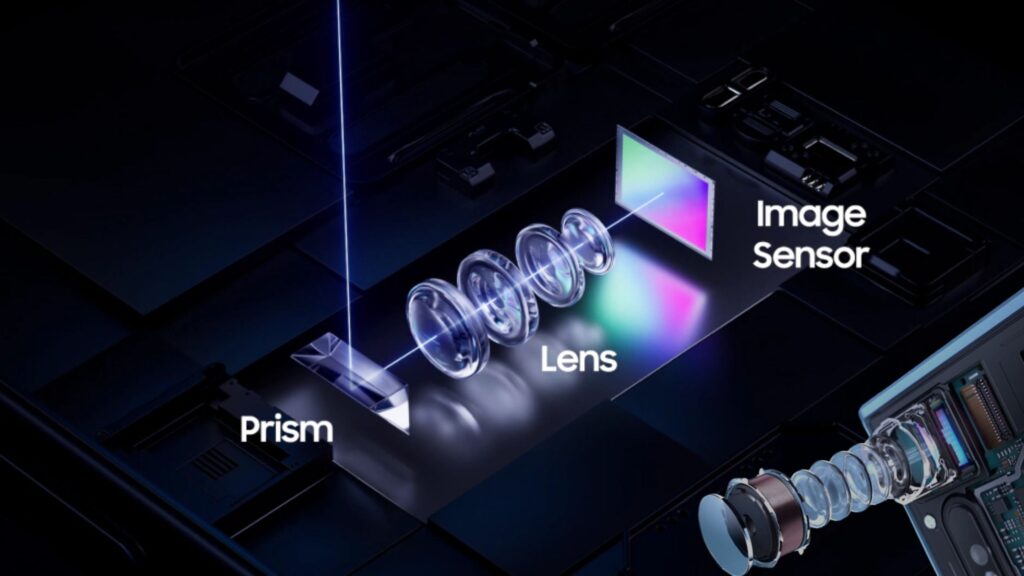How Samsung’s Camera Tech Competes with DSLR Quality
Can your phone really replace your DSLR? That question isn’t so far-fetched anymore. Samsung’s latest camera tech is blurring the line between mobile and professional photography, packing serious power into a device that fits in your hand.
It’s not just about megapixels — it’s about smart sensors, AI enhancements, and pro-level features that mimic DSLR results. From low-light clarity to manual controls, Samsung is proving that mobile photography isn’t just catching up — it’s redefining the game.
The Sensor Revolution Behind Samsung’s Cameras
Samsung’s camera leap comes from years of sensor innovation. Its ISOCELL sensors aim to deliver DSLR-like results, not just higher specs. They’re built to capture light and detail more accurately, especially in everyday and low-light scenes where DSLRs once had the edge.

Bigger Sensors, Better Light Capture
One of the key advantages of Samsung’s ISOCELL technology is its ability to capture more light. Larger sensors paired with wider apertures allow more information to hit each pixel, which significantly improves clarity in low-light settings. Instead of grainy night shots, users get sharper, more balanced images — even without a flash. This marks a huge leap in mobile photography, closing the performance gap that once separated smartphones from DSLRs in poor lighting.
Megapixel Power vs. Practical Detail
Samsung’s Ultra sensors go beyond 108MP, but it’s not just about numbers. The real value lies in how these pixels support detail, flexibility, and clarity across different shooting situations.
| Feature | High Megapixels (108MP+) | Practical Impact |
|---|---|---|
| Detail Retention | Exceptional | Enables sharp images, even after cropping |
| Zoom Flexibility | Improved | Maintains clarity across digital zoom levels |
| Print Size Potential | Large-format ready | Allows for high-quality poster-size prints |
| Dynamic Range Support | Enhanced with software | Balances highlights and shadows |
| Storage & Processing Demand | High | May require more space and processing power |
It’s not just about packing pixels — it’s about making them work. Samsung’s smart processing turns resolution into real, everyday performance.
Pixel Binning for DSLR-Like Clarity
To balance sharpness with realism, Samsung uses pixel binning — combining smaller pixels into larger “super pixels” to boost image clarity and dynamic range. This helps reduce noise, improve color accuracy, and create the kind of depth and tone often associated with DSLR photos, all from a compact mobile sensor.
AI and Computational Photography Make the Magic
DSLRs thrive on optics and manual settings, but smartphones rely on software to make smart decisions fast. Samsung strikes a balance by using AI not as a gimmick, but as a tool that brings out the full potential of each shot — even in challenging conditions.

Scene Optimization That Thinks Like a Photographer
Samsung’s Scene Optimizer acts like an automatic assistant, recognizing what’s in front of the lens and adjusting camera settings in real time. This feature uses AI to mimic the decision-making process of a skilled photographer — but it all happens instantly, without manual input.
- Exposure – Balances brightness based on scene lighting to avoid harsh shadows or blown-out highlights.
- White Balance – Adjusts temperature for true-to-life colors, whether you’re indoors or under sunlight.
- Saturation and Sharpness – Enhances texture and depth based on subject type, like food or foliage.
These real-time adjustments bring clarity and polish to everyday shots, helping users capture more professional-looking photos with little effort. It’s like having good instincts built into the camera.
Super HDR and Night Mode Enhancements
High Dynamic Range (HDR) has long been a DSLR stronghold, especially when dealing with bright skies and dark shadows in a single frame. Samsung’s Super HDR takes multiple exposures and merges them instantly, ensuring both the highlights and the shadows are preserved without overprocessing.
In low-light situations, Night Mode uses advanced noise reduction and multi-frame processing to brighten scenes without sacrificing clarity. Where older smartphones would deliver blurry or grainy images, Samsung produces crisp results with better color balance — rivaling what a DSLR might achieve with the right lens and long exposure.
Portrait Mode That Mimics Lens Blur
Achieving natural-looking background blur is a classic DSLR trait, often dependent on wide apertures and quality lenses. Samsung’s Portrait Mode uses depth mapping and edge detection to replicate this effect digitally. It isolates the subject, applies a smooth bokeh effect, and even allows adjustments after the shot. The result feels refined — not overdone — giving smartphone photos a professional touch that mimics DSLR depth of field.
Zoom, Stabilization, and Video — Going Beyond Still Shots
Sharp photos are only part of the story. To rival a DSLR, a smartphone must handle zoom, motion, and video with equal precision. Samsung delivers on all fronts, offering powerful tools without the bulk of traditional gear.
Space Zoom and Periscope Lenses
Samsung’s zoom capabilities go far beyond basic digital crop. By integrating a periscope-style lens system, it delivers DSLR-level reach without the bulk.
- Periscope Lens Design – Bends light internally, allowing powerful zoom without increasing phone thickness.
- 10x Optical Zoom – Captures distant subjects with clarity, avoiding the blur of standard digital zoom.
- 100x Space Zoom (Hybrid) – Combines optical and AI-enhanced digital zoom for ultra-long range shots.
- Sharp Detail at a Distance – Great for travel, events, and nature photography where proximity isn’t an option.
This setup gives users a level of zoom flexibility usually found in professional camera kits — all packed into a phone.
Optical and AI Stabilization
Shaky hands can ruin an otherwise perfect moment. Samsung addresses this with a mix of hardware-based Optical Image Stabilization (OIS) and AI-powered video stabilization. OIS helps reduce blur during long exposures or zoomed shots, while AI stabilization predicts and adjusts for movement in real-time. The result? Smooth images and steady videos, even while walking or filming on the go.
8K Video and Pro Video Features
Samsung’s camera system isn’t just for photos. With 8K video recording and features like Pro Video Mode, creators can adjust ISO, shutter speed, white balance, and focus — much like using a DSLR. It also supports multi-mic recording and Director’s View, letting users switch between lenses mid-recording. These tools empower mobile filmmakers to shoot with depth, flexibility, and cinematic control, all from their phone.
Pro Mode, RAW Capture, and the Creative Edge

For casual users, automatic settings may be enough. But for creators who want full control, Samsung’s camera system offers a level of manual precision and flexibility that feels surprisingly close to using a DSLR. From RAW capture to multicam features, the tools go beyond point-and-shoot, unlocking creative options that even some traditional cameras lack.
Full Manual Settings in Pro Mode
Samsung’s Pro Mode lets users control core camera settings just like a DSLR:
- ISO – Adjust light sensitivity for bright or dim scenes.
- Shutter Speed – Control motion blur or freeze fast-moving subjects.
- White Balance – Set color temperature to match lighting conditions.
- Focus – Switch to manual focus for more creative shots.
This mode gives photographers the freedom to shape the shot instead of relying on auto settings, which can often misinterpret the scene.
RAW Photography and Post-Processing Freedom
Capturing in RAW preserves all image data, unlike compressed JPEGs. Samsung supports RAW files that rival those from entry-level DSLRs. This format gives creators more flexibility in editing:
- Recover shadow and highlight details
- Fine-tune colors without quality loss
- Apply custom presets or styles
For anyone who edits their photos seriously, RAW support makes Samsung phones a reliable tool in any creative workflow.
Director’s View and Multicam Creativity
Director’s View is a unique Samsung feature that allows simultaneous use of multiple lenses — wide, ultra-wide, and selfie — during video capture. It also enables real-time switching between lenses, helping creators frame shots more dynamically. While DSLRs offer high-quality video, they can’t match this level of flexible, on-the-fly perspective control in a single take.
Limitations and Where DSLRs Still Rule
Samsung’s camera tech has come a long way, but smartphones aren’t perfect replacements for DSLRs — at least not yet. There are still areas where dedicated cameras hold clear advantages, especially for professionals who demand the highest performance in specific settings.
Lens Versatility and Optical Depth
DSLRs offer a huge range of interchangeable lenses — from ultra-wide to telephoto, macro to tilt-shift — giving photographers complete creative control. These lenses also provide natural depth-of-field effects that smartphones still simulate through software. While Samsung does a great job with background blur, the optical depth from a DSLR lens remains more precise and adjustable.
Battery Life and Physical Controls
DSLRs shine in long shooting sessions. They offer:
- Extended battery life – Fewer charges needed, ideal for full-day shoots.
- Quick-access physical buttons – Easier to adjust settings without diving into menus.
- Comfortable grip and balance – Built for stability and long use with heavier lenses.
These design details make DSLRs more practical for extended or high-pressure shoots where speed and reliability matter.
Sensor Size and Dynamic Range at the Top End
Full-frame DSLR sensors are physically larger than smartphone sensors, allowing them to capture more detail, better light, and richer tones. In extreme lighting or controlled studio settings, DSLRs still outperform when it comes to fine dynamic range, color accuracy, and overall image depth — areas where smartphones continue to catch up, but haven’t fully arrived.
Conclusion: Is Samsung Ready to Replace Your DSLR?
For most users, Samsung’s camera tech delivers more than enough — sharp photos, pro video, and manual control in one device. It handles everyday shooting and creative projects with ease, making it a strong alternative to carrying a DSLR.
Still, DSLRs hold their place in areas like lens range, battery life, and studio-level image quality. But Samsung isn’t just trying to compete — it’s changing what we expect from mobile cameras.
It may not replace every DSLR yet, but it’s clear: the gap is closing fast.

